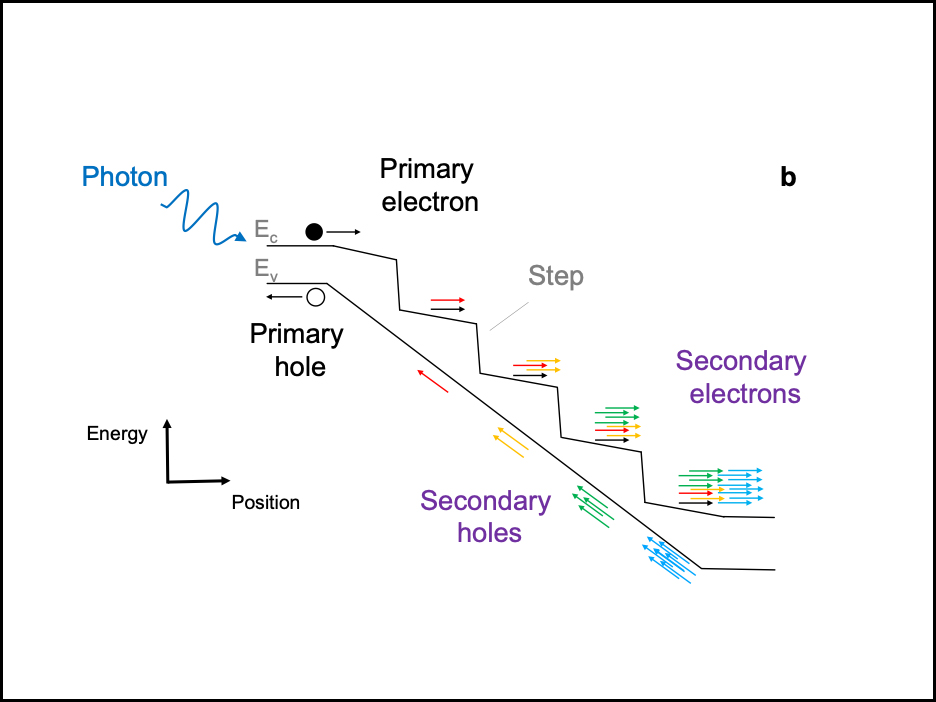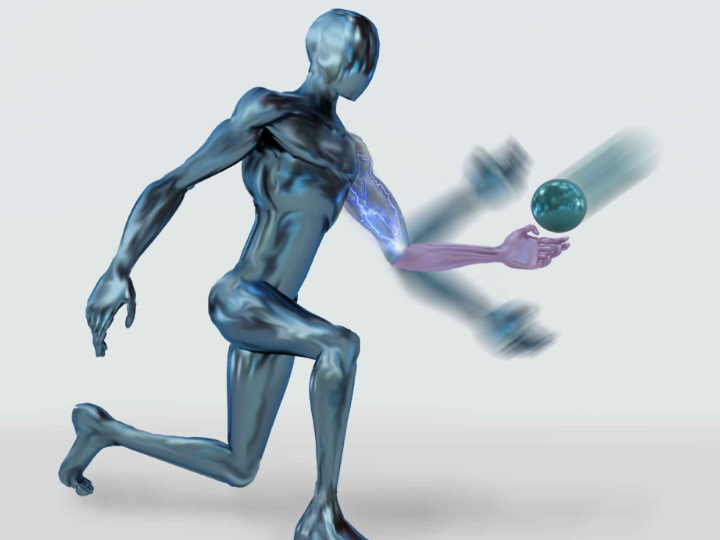2021-05-20 アメリカ合衆国・テキサス大学オースチン校(UT Austin)

・ UT Austin とヴァージニア大学が、マルチステップ型のアバランシェフォトダイオード(APD)による超高感度光検出デバイスを初めて開発。
・ 遠方のオブジェクトで跳ね返る微弱な信号を従来技術に比べてより正確に増幅すると共に、信号検出ミスの原因となるノイズも除去。さらに、室温下での作動も可能で、自動運転車に道路状態の全体像を提供する。
・ ピクセルサイズの新デバイスは、遠方のオブジェクトで跳ね返る光信号を検出する高解像度センサーを必要とする LiDAR レシーバに最適となる。自動運転技術で重要な役割を担う LiDAR は、ロボティクスや地形調査等のアプリケーションでも利用される。
・ APD は、なだれ機構によりキャリアを倍増させてより大きな電流を引き起こす、エネルギーの物理的ステップであるアバランシェ増倍現象を利用したデバイス。同大学では 2015 年にシングルステップ型のデバイスを開発している。
・ ステップ数の追加により、デバイスの感度と安定性が向上。各ステップで電子が持続的に倍増することで、弱光下の検出器からの電気信号の信頼性が高まった。
・ 光センシングの究極のデバイスとして、光電子増倍管(PMT)は 50 年以上にわたり利用されているが、旧式の光コンポーネントと真空管を使用している。半導体による APD 技術は、1980 年代初頭にフェデリコ・カパッソが考案した。
・ 従来のものに比べて高感度のマルチステップ型 APD は、レーザー測定装置、光通信、暗視スコープや 3D イメージング LiDAR 等の軍務において重要なアプリケーションの進展を促進する。
・ 昨年開発した近赤外光に高感度の APD との統合を予定。光ファイバー通信や赤外線画像等の新しいアプリケーションの創出が期待できる。
・ 本研究には、米国陸軍研究所(ARO)および米国防高等研究計画局(DARPA)が資金を提供した。両組織による資金提供によりプロセスの高度化を継続して実施し、デバイスのステップ数をさらに増加させる。半導体メーカーと協働し、同 APD の商業化を目指す。
URL: https://www.engr.utexas.edu/news/archive/9238-ultra-sensitive-light-detector-gives-self-driving-tech-a-jolt
<NEDO海外技術情報より>
(関連情報)
Nature Photonics 掲載論文(アブストラクトのみ:全文は有料)
Multistep staircase avalanche photodiodes with extremely low noise and deterministic amplification
URL: https://www.nature.com/articles/s41566-021-00814-x
Abstract
In 1982, Capasso and co-workers proposed the solid-state analogue of the photomultiplier tube, termed the staircase avalanche photodiode. Through a combination of compositional grading and small applied bias, the conduction band profile is arranged into a series of steps that function similar to the dynodes of a photomultiplier tube, with twofold gain arising at each step via impact ionization. A single-step staircase was previously reported but did not demonstrate gain scaling through cascading multiple steps or report noise properties. Here we demonstrate gain scaling of up to three steps; measurements show the expected 2N scaling with the number of staircase steps, N. Furthermore, measured noise increased more slowly with gain than for photomultiplier tubes, probably due to the lower stochasticity of impact ionization across well-designed heterojunctions as compared with the secondary electron emission from metals. Excellent agreement was found between the experiments and Monte Carlo simulations for both gain and noise.


